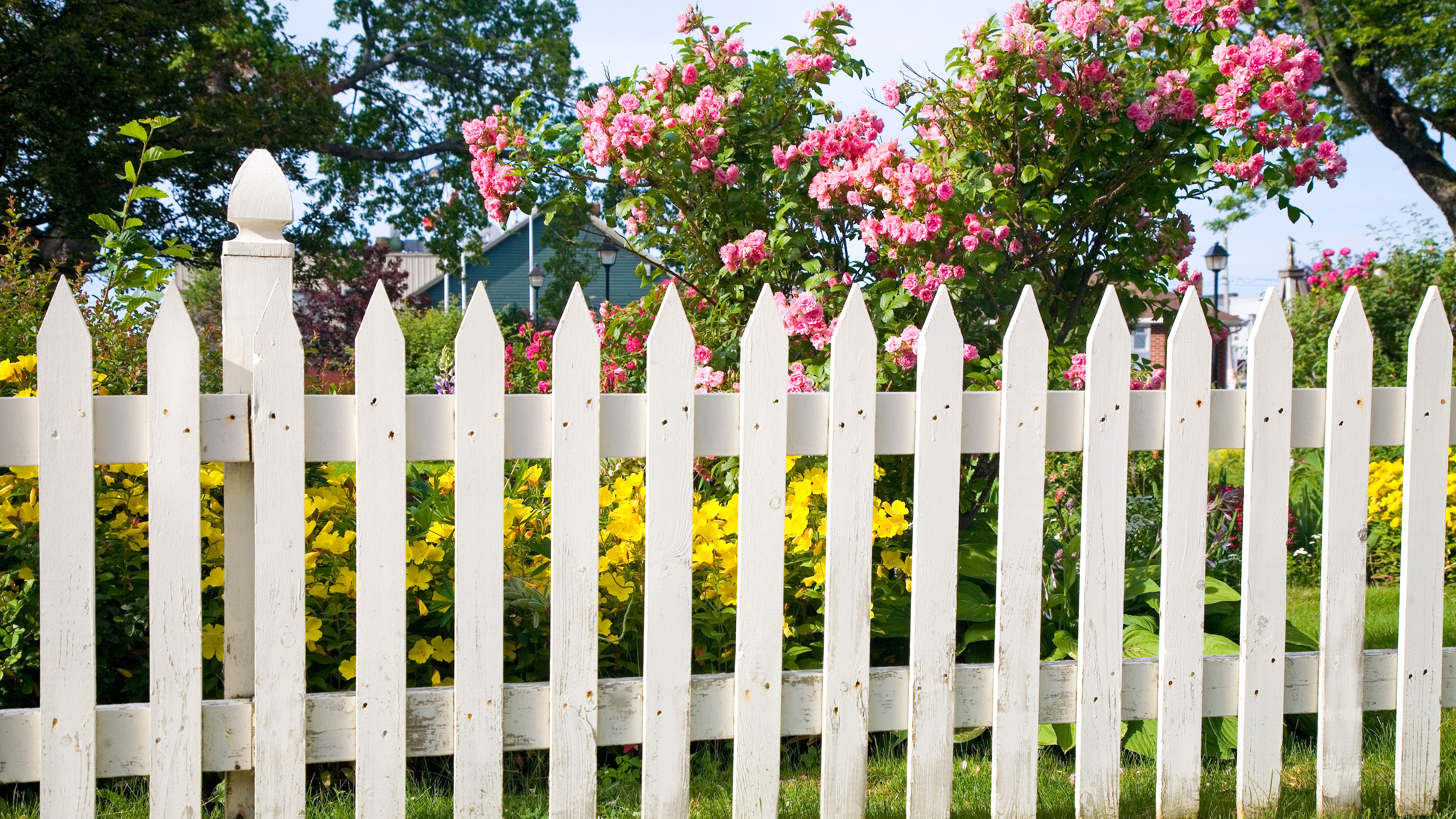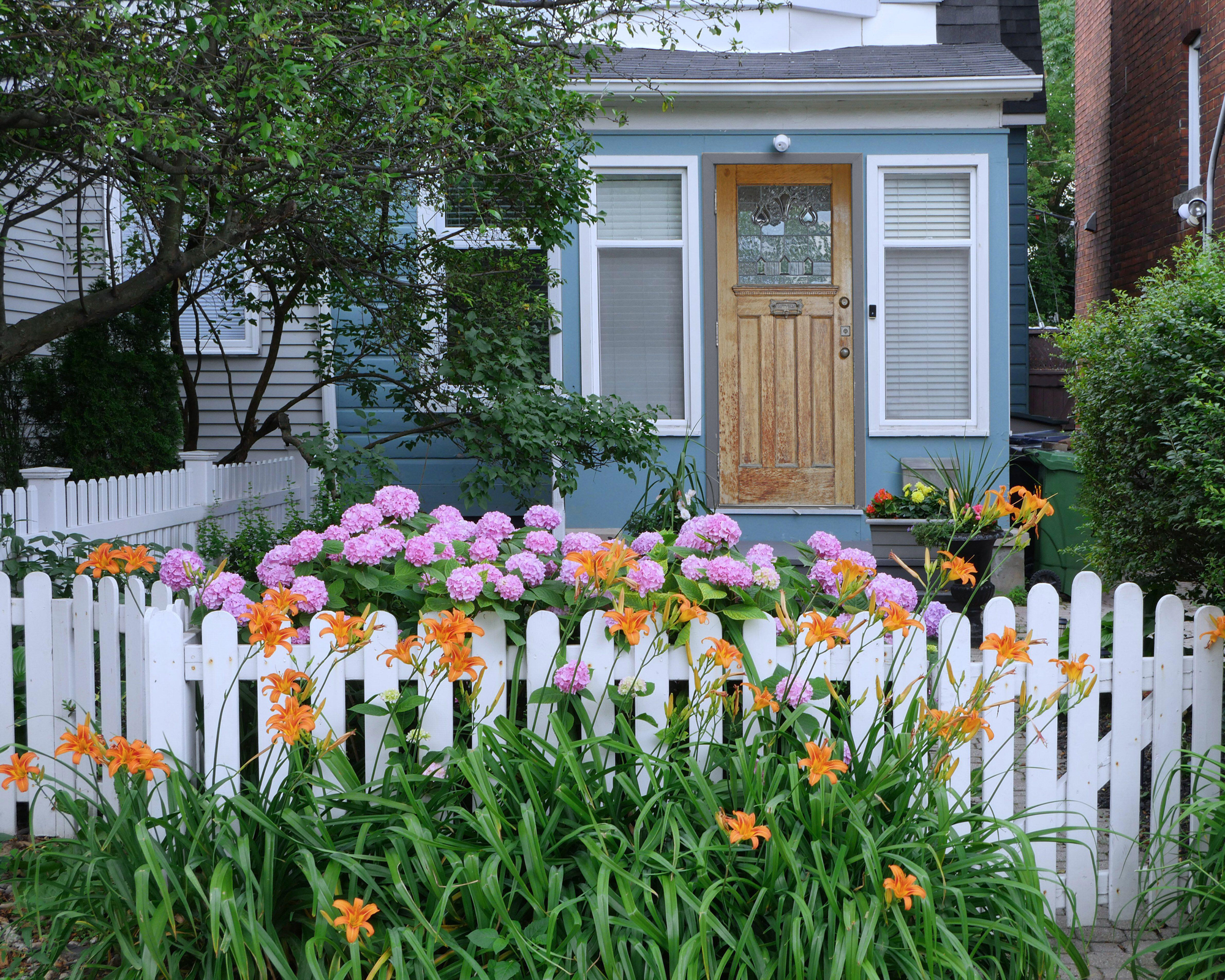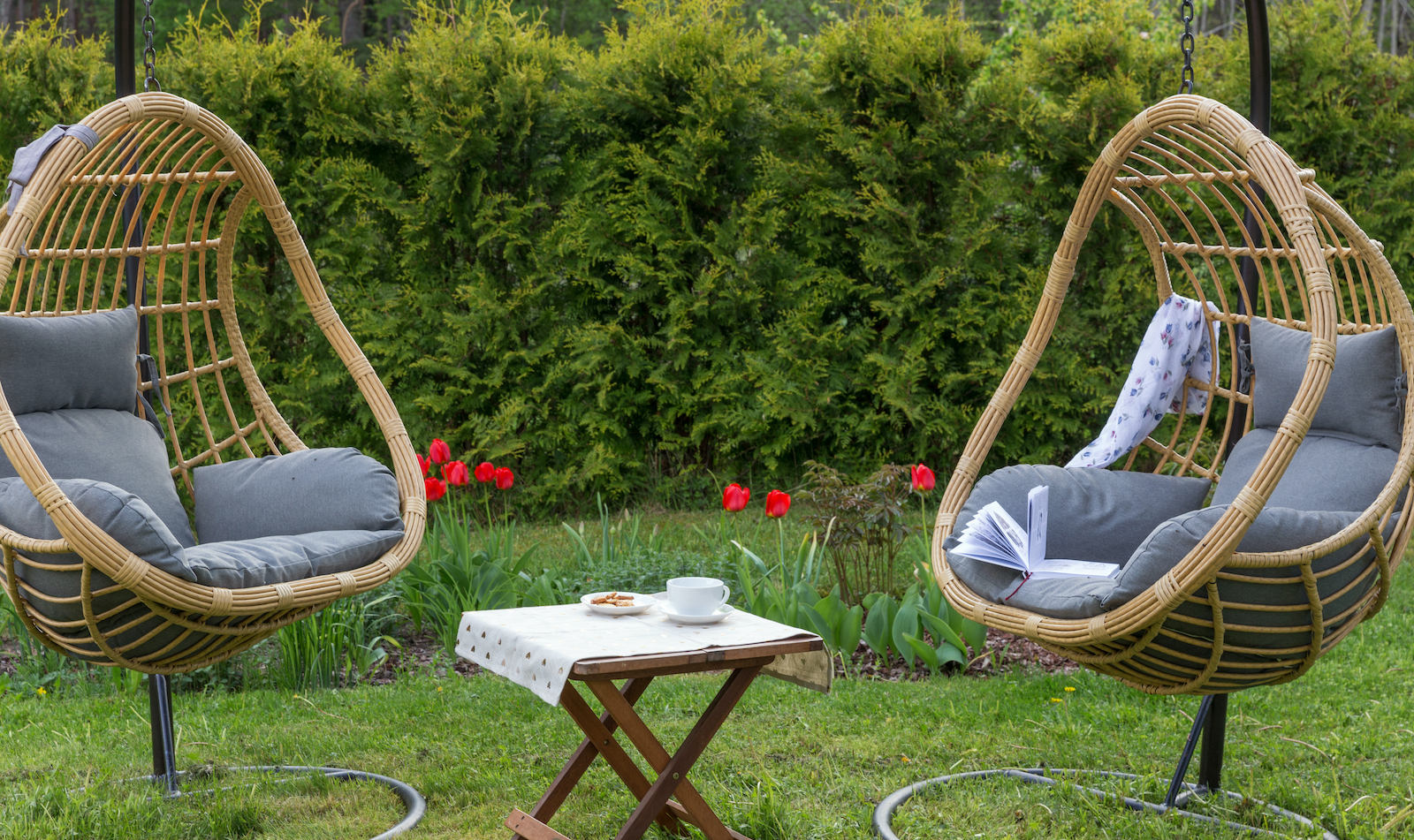
Knowing the fence rules where you live is essential if you want to enjoy your backyard or front yard in peace and avoid potentially costly disputes. Which side of the fence is yours, left or right? And what do you need to do when you are building or installing a new fence as opposed to moving into a home with an existing border?
Before you start browsing those pretty fence ideas, make sure you are up to date on fence rules. This expert advice should include all the information you need.
Fence rules US: which side of fence is mine?
When is a fence a problem? Toni Lewis, of Schoeplein Architects, tells us that 'fences make good neighbors, but they can also be a source of conflict!'
The most basic rule is that 'the person on whose property the fence is located owns, and is therefore responsible for, the fence. If the fence (or wall) is built right ON the property line then the fence would be considered jointly owned by both properties, with each property responsible for the upkeep of the side that faces their house.'
If you have a good, long-standing relationship with your neighbors and you share a fence, then it may be possible to agree to share the costs and responsibilities of said fence. Lewis admits that although this scenario is 'ideal', it is 'not always practical.'
In most cases, 'the surest way to know who owns a fence is to have a property survey done by a licensed surveyor. This document will show property lines and will indicate on whose property an existing fence resides.'
Fence rules: the importance of the stakeout survey
As David Reischer, Esq., Real Estate Attorney at LegalAdvice.com, cautions, 'a homeowner cannot build a fence anywhere they want. It is not uncommon to have a boundary line dispute and a fence needs to be taken down after costly construction
to erect.'
To prevent such disputes, 'a homeowner should hire a licensed surveyor to ascertain where the true boundary line resides. A '‘stakeout'' survey' will mark the ground where the legal boundary line exists. A licensed surveyor will read the
deed and upon the reading of the deed with precise measurements, then mark
the ground where the actual boundary line resides.'
Once the surveyor has completed the survey, a fence can be built. 'State laws may permit the side of the fence facing a neighbor to be painted or slightly altered so be sure to consult an attorney to learn the applicable law in your local jurisdiction.'
In other words, local laws will vary, so you should always consult a legal professional in your area.
Do I own the left or right side of my fence?
John Riedl, a Tampa, Florida-based remodeler and landlord, explains that 'there is no conventional rule as to whether the fence on the left or right side of your land belongs to you.'
In some cases, simply taking a good look at your backyard will give you a good idea of which side of the fence you're in charge of – 'fences were most frequently built on land that belonged to the owner of the boundary, with the far side of the wall forming the actual boundary.'
However, this method for telling which side of the fence you own is not always reliable. Unless it's very obvious, the survey should be your best bet.

Further fence rules to be aware of
The main thing to be aware of is that fence rules vary by state. There are a few further useful terms to know, though, as identified by landscaping expert with USInsuranceAgents.com Dorothea Hudson:
- Occupancy is one definition for using a fence and refers to the use of the property up to the fence.
- 'Join for use' is another term that refers to the attachment of another fence to the boundary fence.
- 'Entire Enclosure' – this is when the entire property is enclosed by the attachment of another fence to the boundary fence.

Fence rules in the UK
If you are in the UK, fence rules are part of property boundary laws and can be complicated depending on when your house was built and its current deeds. If there is a determined boundary around your property already, then this should be recorded in the property deeds. If there isn't, you can apply to have a determined boundary established on the gov.uk website.
Alternatively, you can make a formal agreement with your neighbors on where the boundary is and who owns the fence or hedge between the two properties.
Join our newsletter
Get small space home decor ideas, celeb inspiration, DIY tips and more, straight to your inbox!
Anna is a professional writer with many years of experience. She has a passion for contemporary home decor and gardening. She covers a range of topics, from practical advice to interior and garden design.
-
 Backyard inspiration: interior designers reveal the four things you need for summer 2024, starting at just $40
Backyard inspiration: interior designers reveal the four things you need for summer 2024, starting at just $40Our edit of backyard inspiration according to interior designers will help you perfect your space for summer. Here's what the professionals are shopping this year.
By Danielle Valente Published
-
 There's a kamado-style Grill Meister at Lidl for less than $100, and it's a small space steal
There's a kamado-style Grill Meister at Lidl for less than $100, and it's a small space stealThere's a kamado-style Grill Meister, Lidl's recent popular buy, that clocks in at just $75. Here's why it works so well and why you need it in your backyard
By Danielle Valente Published
-
 Our favorite Wayfair patio furniture picks for small spaces that make a big impact
Our favorite Wayfair patio furniture picks for small spaces that make a big impactWe scoped out Wayfair patio furniture — some of which is up to 60% off this Way Day — and found perfect fits for small spaces
By Danielle Valente Published
-
 Anthropologie's outdoor egg chair is a boho delight, but we found swaps for $800+ less
Anthropologie's outdoor egg chair is a boho delight, but we found swaps for $800+ lessThe outdoor egg chair from Terrain, available at Anthropologie, is a cute boho, buy, but expensive. Check out these hanging egg basket swaps that are over $800 less
By Danielle Valente Published
-
 Target outdoor furniture that perfectly captures 2024's best backyard trends
Target outdoor furniture that perfectly captures 2024's best backyard trendsDining sets, love seats, umbrellas — Target outdoor furniture offerings are as abundant as they are stylish. See what trendy pieces to snag this year
By Danielle Valente Published
-
 Walmart backyard furniture picks from just $25 that will keep out nosy neighbors
Walmart backyard furniture picks from just $25 that will keep out nosy neighborsWe round up Walmart backyard furniture picks from just $25 that are stylish, seclusive, and eye-catching. If you want to make a statement, particularly one neighbors can't see, shop these deals.
By Danielle Valente Published
-
 Tan France tips us off on the must-have "chic" backyard accessory of the season, and it's only $10
Tan France tips us off on the must-have "chic" backyard accessory of the season, and it's only $10Tan France tips us off on the backyard buy not to do without: plastic glassware. It's a chic way to host outdoors, particularly with kids in tow.
By Danielle Valente Published
-
 The latest Pottery Barn sale will help you create the backyard oasis of your dreams with up to 30% off
The latest Pottery Barn sale will help you create the backyard oasis of your dreams with up to 30% offThe latest Pottery Barn sale offers up to 30% off outdoor buys including furniture and decor. Here's what to shop for the spring and summer seasons.
By Danielle Valente Published